It goes into great detail on how to identify,
speed, and direction of aircraft, both by VISUAL contact and BY SOUND.
It is the latter which is interesting.
SOUND SPOTTING
Sound from aircraft is produced by (1) the air-screw,
(2) passage of the machine through the air, (3) the engine. The manoeuvre
of the machine will vary each and all of these. The resulting sound is
therefore not constant. Experience will help distinguish (1) the heavy
bet of the loaded bomber, (2) the constant drone of the fighter, (3) the
“popping” of a light trainer, but not between hostile and friendly aircraft.
All twin-engine aircraft, hostile or friendly, produce an intermittent
drone. Note also, two single engine aircraft flying together produce the
same effect.
At ground level sound travels at approximately 750 m.p.h.,
or one mile in 5 seconds.
360 m.p.h. – 1 mile in 12 seconds. 300 m.p.h. – 1 mile
in 12 seconds.
260 m.p.h. – 1 mile in 14 seconds.
The text sets out in great detail, how to determine wind
strength.
10 m.p.h. Light breeze, Light flag extended, leaves and
twigs in motion.
20 m.p.h. Mod. Breeze Dust raised, loose papers blown
about. It continues to high wind at 30 m.p.h.
The direction from which sounds emanate can be best judges
by “balancing” the sound evenly upon both ears. The range of sound is affected
by the wind. A favourable wind has the affect of throwing the sound waves
downwards, thus increasing its range. An adverse wind throws the sound
waves upwards, decreasing its range. On a night of hard frost, it has been
known for highflying aircraft to be heard 20 miles away. Clouds can both
reduce range and alter direction by refraction of sound waves. Ground noises
must also be allowed for.
These are instructions Air Raid Wardens and volunteers
had to become familiar with in their day-to-day duties, The book covers
many more wartime subjects such as, first aid to air raid casualties; how
to set up a roof observation post; enemy parachutists uniforms and weapons.
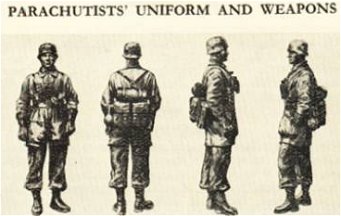 We thank Robert Henderson, proprietor of HOMEFRONT ARCHIVES
& MUSEUM
We thank Robert Henderson, proprietor of HOMEFRONT ARCHIVES
& MUSEUM
For the loan of this note book
homefront@sasktel.net
Ph. (306) 543-5822
David
Scott Fraser - A WAG with a very interesting and unusual story.
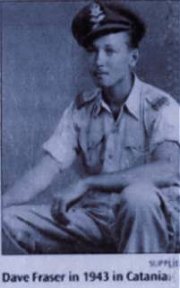 David
Fraser was born in Glasgow, Scotland on September 14, 1919. He emigrated
to Canada in 1921 with his Mother and two sisters. He enlisted in
the Royal Canadian Air force in Calgary, Alberta in 1940 and
had high hopes of becoming a pilot. His hopes were to be dashed however.
He began his career at No.2 Manning Depot in Brandon, Manitoba where he
was selected for training as a Wireless Operator/Air Gunner. The
next part of the journey is one followed by many a young aircrew trainee,
No.2 Wireless School in Calgary, Alberta, No 2 Bombing and Gunnery School
at Mossbank, Saskatchewan and then overseas to Bournemouth in the UK.
David
Fraser was born in Glasgow, Scotland on September 14, 1919. He emigrated
to Canada in 1921 with his Mother and two sisters. He enlisted in
the Royal Canadian Air force in Calgary, Alberta in 1940 and
had high hopes of becoming a pilot. His hopes were to be dashed however.
He began his career at No.2 Manning Depot in Brandon, Manitoba where he
was selected for training as a Wireless Operator/Air Gunner. The
next part of the journey is one followed by many a young aircrew trainee,
No.2 Wireless School in Calgary, Alberta, No 2 Bombing and Gunnery School
at Mossbank, Saskatchewan and then overseas to Bournemouth in the UK.
Like all aircrew he was anxious for a posting to a flying
unit but in January, 1942 he found himself on board the passenger liner
Louis Pasteur which had been converted to carry 7000 troops. Dave,
and approximately 300 aircrew, were bound for Egypt to serve as Wireless
Operators on aircraft being ferried from Europe to Singapore. The
Mediterranean Sea was a dangerous body of water thanks to the Kreigsmarine
and the Luftwaffe so they were forced to travel the long way around the
southern tip of Africa. They sailed in a 22 ship convoy and
the trip took two months. On March 06, 1942 the Pasteur off loaded
her passengers at an Egyptian port on the Red Sea.
Dave and his companions were transported to Kasfareet
a Royal Air Force transit camp 120 kilometres south of Cairo where they
spent the next 3 1/2 months in a dusty tent city . The Japanese
had by this time captured Singapore so the job of ferrying aircraft to
that locale was cancelled. There was now the problem of what to do
with 300 surplus WAGs. "We volunteered to do anything , drive trucks,
handle supplies, anything" says Dave. One by one the WAGs were transferred
to operational units until only 24, including Dave, remained.
They were awakened early one morning and told that they were being sent
to a Canadian squadron, good news indeed. They loaded their gear
in a truck, climbed on board, and were driven north along a road that paralleled
the Suez Canal. .When they arrived at the Canadian squadron disappointment
overtook them. The squadron was equipped with Hawker Hurricanes and
had no need for WAGs, so they turned around and headed back towards Kasfareet.
On the return trip they passed an airstrip lined with
USAAF (United States Army Air Corps) B- 25 Mitchell medium bombers. .
The RAF driver was reluctant to stop so they threw him out and took over
the truck. The airstrip was home to 434 Squadron of the USAAF
and the Commanding Officer, Major George Gutru, was curious about his unexpected
visitors. They explained to him that they were RCAF Wireless Operators
and unemployed at the moment. The Major was excited at this bit of
news and invited them to lunch, pork and beans, Spam, white bread and coffee,
much better fare than they had been used to these past few months.
They told the Major of their posting problems and of their desire to be
employed at their trade, he in turn told them of his problem.
The radio Operators on his squadron didn't know British wireless procedures
and couldn't identify themselves to the troops on the ground. Whenever
they flew over British positions they were fired on, a very dangerous situation.
It would appear that aircraft identification was not a high priority with
the 8th. Army. Dave Fraser and his companions knew the proper procedures
of course and they suggested that they fly with the B-25 crews on their
operational sorties. The CO was more than happy to accept this offer
and the Canadians moved in to the USAAF camp. The camp was a paradise
apparently, good food, folding cots, pillows and even mosquito netting,
something unknown at Kasfareet. There was some question regarding
pay, however, they had their Pay Books and a visit to the nearest British
Paymaster would result in them being paid in cash. This, of course,
is what they did.
This band of Canadians had arrived at a pivotal time in
the Desert war. The Battle of El Alamein began on October 23, 1942 and
Dave had a front row seat. His position in the aircraft, just
behind the bomb bay, came complete with a window. It was like looking
down at a table top with toy tanks and vehicles scattered about is how
Dave described it. Throughout the campaign the B-25s operated between
5000 feet and 8000 feet and that made them easy targets for German flak
and the Canadians began to take casualties. Three aircraft were shot
down and one Canadian was killed and two became POWs.
Dave's aircraft didn't escape unscathed, on one operation
an 88mm shell tore a hole in the fuselage, the dinghy flew out of its storage
and wrapped itself around the fin and rudder. They flew back to Base
with the dinghy flapping in the slipstream. On April 06, 1943 they suffered
severe damage from flak, the instruments and radio ceased to function and
one engine began to fail. The hydraulic system was damaged with the
result that the bomb bay doors remained open. Hearing a cry for help
Dave went forward through the open bomb bay and found two injured crewmen.
The Co-pilot came back with the first aid kit and he and Dave attended
to the two injured crewmen. The Co-pilot then returned to the cockpit
to assist in flying the aircraft. With no hydraulics Dave and the
Gunner had to crank the undercarriage down by hand. On reaching Base
the Pilot, Captain Carl Killian, had to make the initial landing on two
wheels because one tire had been blown out by shrapnel. The two wounded
crewmen survived their injuries and were repatriated to the U.S.A.
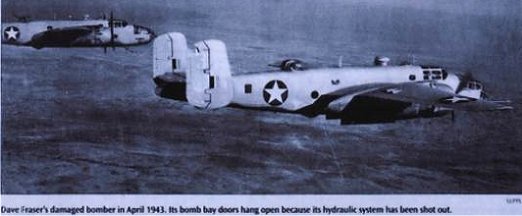
The squadron moved to Sicily where Montgomery's 8th. Army
was moving north from Catania toward Messina. Things were getting
better for the Canadians, on days when they were not flying, they would
borrow a Jeep, pick up some Canadian nurses from No.5 General Hospital
near Catania and spend a pleasant day in the country. They had informed
the authorities where they were and what they were doing and they were
advised to report to the nearest RAF Base when the USAAF was finished with
them.
During this time Dave had acquired a small white puppy
which he Christened "Muggs". The pup accompanied Dave on seven operations
lying on his personal towel on the floor near the ROs seat. On one
trip, when the flak began to shake the aircraft, Muggs got up off his towel
and, with tail wagging, walked over to Dave. At that moment a shell
fragment came through the floor of the aircraft and tore through the towel.
The pup licked Dave's hand then went back to the torn towel to lie down.
Do dogs have a 6th. sense? We wonder.
In September, 1943 Dave had completed the required tour
of 50 operations for B25 crews. He packed his bags and headed for
Egypt where he was booked on a troopship to Canada. He was discharged
from the RCAF on October 23, 1945 and married the love of his life, Dorothy
on December 08, 1945. He worked in finance throughout his career
on civy street and became National Credit Manager for Western Supplies
limited until his retirement in 1984. He and Dorothy spent 12 years
on Vancouver Island fishing, gardening, and enjoying the company of friends.
In 1999 they returned to Edmonton, Alberta to be close to family.
Dave joined the local Ex-Air Gunners Association in 2002 after getting
an invitation from Svend Jensen. He was a regular at the monthly
luncheons and other functions and quickly made many new friends.
On February 04, 2006 Dave and Dorothy flew down to Mexico
for a vacation with Dave's sister and her husband. This was the second
such holiday in two years and was to celebrate their 60 years of happy
marriage. On the morning of February 11, Dave suffered a massive
heart attack and passed away at the age of 86. The local Air gunners
were well represented at a reception in his honour at his home on February
25, 2006. We shall miss him at the table and his big smile as he,
once again, won the 50-50 draw.
Westlawn Memorial Garden in West Edmonton is constructing
a Veterans Memorial Wall, their Year of the Veteran project, and the name
David Scott Fraser will be on it alongside many other young men who volunteered
to serve their country in time of need.
The information in this article was supplied by Dorothy
Fraser and we are most grateful to her for sharing it with us.
Ted Hackett
Biography: Earle Stewart
Rheaume RCAF 431 (Iroquois) Squadron.
Earl Rheaume
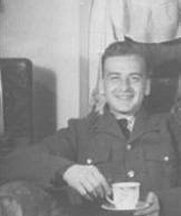 On
February 20, 1914 my dad was born in Ottawa Ontario, to Lillian and Eddie
Rheaume.
On
February 20, 1914 my dad was born in Ottawa Ontario, to Lillian and Eddie
Rheaume.
Dad attended Devonshire Public School, where he was awarded
the Certificate of Honour, after completing his third year in 1926-27.
Dad graduated with honours, from Glebe Collegiate in 1932.
Dad met his later to be wife, at a Saturday evening church
dance. Dad asked the then, Dorothy Ristow for a dance, she agreed,
and they danced together, the remainder of the evening.
Their courtship eventual led them to elope and marrying
in a civil ceremony on January 31, 1936. Their two best friends attended.
The four celebrated with dinner, drinks and dancing.
Those were the depression years where rationing, unemployment
and tough times touched most families, including dad and moms.
Dad would take on any employment that he could find. He
was happy to do so, and worked at the Clark Dairy Limited and later the
Ferris Transfer.
Their first son Graham, was born on August 10th 1936 at
the Salvation Army Grace Hospital. Graham died at 4 ½ years, of
End Stage Nephritis, on March 23rd 1941.
I (Earle) their second son, was born some three months
later, on June 27th also at the Salvation Army Grace Hospital.
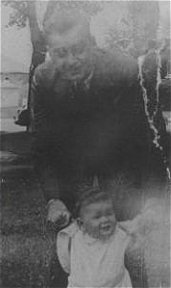
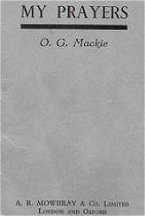
Dad’s last time with son Earl ~ Dad’s
Prayer Book
Dad applied for enlistment in the RCAF on November 28,
1940. He met all qualifications for Aircrew duties – either as a Pilot,
Observer or Wireless Operator Air Gunner. He enlisted in June 1941, receiving
his training at No. 1 Wireless School at Montreal; Manning Pool, Toronto;
Camp Borden and Fingal, where he received his air gunner’s wing in June
1942. He arrived overseas one month later joining up with RCAF Squadron
431 (Iroquois).
June 12 1943 at 2:45 AM – Wellington HE 392 Crashed:
While returning to home base at Burn Yorkshire, England,
from a bombing raid on Dusseldorf, Earl and his four crew members aboard
their Wellington HE 392 bomber, were attacked by a German Night Fighter.
The Wellington was last seen in flames and diving toward the earth. It
crashed on the land of Mr. Komen at Schagen Netherlands.
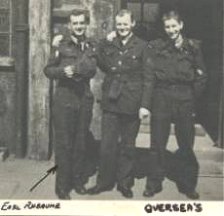
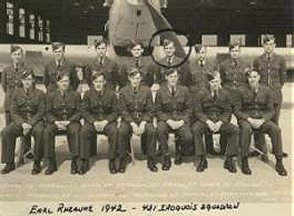
The remains of only one of the five-member crew was recovered
and buried the same day: Dad (Grave #183, Row 10, in Petten, District Zype).
The bodies of the other four-crew members were not recovered.
Royal Netherlands Air Force Aircraft Recovery Team
(ARG):
On September 10, 1991 the Royal Netherlands Air Force
Aircraft Recovery Team (ARG) began carrying out excavations at the crash
site, and discovered the remains of the four missing crew.
Together again after fifty years:
On June 16, 1993 a full military funeral honours, including
British, Netherlands and Canadian military and officials, reunited the
four-crew members with my dad, after fifty years of separation.
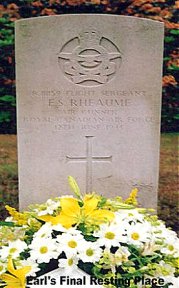 L
C Scott Flt/Lt. CHAPLAIN:
L
C Scott Flt/Lt. CHAPLAIN:
“I knew the whole of this crew well, as it is my custom
to see them off at night and very often meet them on their return in the
morning.
Earl, I knew particularly well, as he very often
played the piano for me at my church services and was always very ready
and willing to do so. Also his gift for playing the piano was a valuable
asset to us here, both in the Concert party and also at dances”.
Members of the crew of Wellington HE 392
Squadron Leader W E Mulford RAF (Pilot)
Flying Officer C A MacDougal RCAF (Navigator)
Warrant Officer 11 J G Breen RCAF (Bomb Aimer)
Flight Sergeant E S Rheaume RCAF (Air Gunner)
Sergeant J R Bell RAF(VR) (Wireless Operator/Air
Gunner)
Earle Rheaume
See More of the Earle Rheaume RCAF Bio in the May
2006 edition of Bill Hillman's As You Were . . .
Through
the Rear View Mirror
by Charley Yule
Charley Yule 192 Squadron, 100 Group
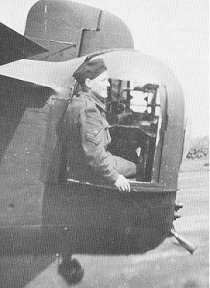 During
our FINAL NATIONAL REUNION held in Edmonton in the fall of 2000, when the
decision was made to disband, quite a change took place in my involvement
with the Association. Having served as Founding Member from it’s inception
in 1983, as well as acting as Secretary/Treasurer and sometimes Editor
of our Newsletter, it was a bit difficult to dis-associate myself from
the Ex Air Gunner’s Association. There was also a big change in my health,
but once I returned to my home and, with the aid of a good doctor, doing
my best to follow his advice I have now made it to 2006 and am doing not
too badly, but began to feel ‘old’!
During
our FINAL NATIONAL REUNION held in Edmonton in the fall of 2000, when the
decision was made to disband, quite a change took place in my involvement
with the Association. Having served as Founding Member from it’s inception
in 1983, as well as acting as Secretary/Treasurer and sometimes Editor
of our Newsletter, it was a bit difficult to dis-associate myself from
the Ex Air Gunner’s Association. There was also a big change in my health,
but once I returned to my home and, with the aid of a good doctor, doing
my best to follow his advice I have now made it to 2006 and am doing not
too badly, but began to feel ‘old’!
It was with a great deal of pride and satisfaction that
17 years after the formation of our Association - we could claim that 1267
former Air Gunners and Wireless Air Gunners who had served during WWII
on Squadrons in the RAF and RCAF had taken the step to become members
of our group. This number included those from former Commonwealth countries,
many of whom trained in Canada as part of the British Commonwealth Air
Training Plan. It also included volunteers into the RCAF of citizens of
the United States of America, prior to that countries entry into WWII (two
years after it began). These individuals felt that standing up to the Axis
powers to keep them and their ideals out of our part of the world, was
a worthwhile endeavour.
Of course, at that time, many in North America felt safe
in their beds with the Atlantic and Pacific Oceans standing between them
and the continents of Europe and Asia - but in today’s world this has proven
to be false security!!!
Having become a widower in 1994, I sold my home and property
near Pine Falls, Manitoba and, in 1997, moved into the thriving metropolis
of Winnipeg, Manitoba to become an Apartment dweller.
My only commitment to the Newsletter now, aside from reading
it, is to act as ‘Obituary Writer’ for any former members of our Ex Air
Gunner’s Association whose passing has been made known to me.
PLEASE NOTE: I need your help in this regard!
You can contact me using the following means:
Surface/Air Mail: 1113 - 70 Whellams Lane, Winnipeg,
MB R2G 2G8;
by Phone - (204) 254-6264; or via Computer E-Mail at:
yulec@mts.net
Through the use of the Original Membership Application
Forms (which I have retained as past Secretary/Treasurer of our Association,
and treat as Historic Documents), plus using any information provided by
the family or informant, I attempt to produce a suitable (hopefully) Obit.
Other than that I just sit back and wait for John Moyles and Bill Hillman
to churn out the next Edition of our Electronic Newsletter: SHORT BURSTS.
Since disbanding in 2000 some of us (notably Doug Penny
and John Moyles for starters) decided to try establishing a Website on
the World Wide Web of the Computer Age Network, with the idea of trying
to keep in touch with our former members as well as anyone else in any
part of the world who might be interested, and who had access to a computer.
The help of Bill Hillman in Brandon, whose expertise
was key, was sought and obtained - and so began the Ex Air Gunner’s Internet
Version of our Newsletter, "SHORT BURSTS" - (Air Gunner Training
stressed: Conserve Ammunition: Make only ‘Short Bursts’).
The Site is Available FREE OF CHARGE, ON A MONTHLY
BASIS
on the Internet, using the following address:
www.hillmanweb.com/rcaf/mag
I have followed Karl Kjarsgaard’s exploits in the raising
of the Halifax MkVII, NA337 from a Norwegian Lake with great interest,
and attended (in the company of one of my two daughter’s) the Dedication
Ceremony of this re-assembled aircraft at Trenton (Ontario) CFB in November
2005.
I also attended the ‘Tribute to Air Gunners Day’ held
at the Museum in Nanton, Alberta in the fall of 2004. On this occasion
I was happy to be accompanied by both of my daughters who happen to be
residents of that province. This turned out to be one of the largest turnouts
of the Museum’s annual Fund Raising activities over the past several years.
It was fun, and I was delighted reconnect with many of our former members
and Airforce friends and also to learn that another Halifax Bomber (LW170)
may have been located in the Irish Sea. Karl is presently following up
on the possible recover of this aircraft.
If successful it is anticipated this machine will become
part of the display at the Nanton (Alberta) Museum.
We are now in our SIXTH YEAR of publishing the Electronic
version of SHORT BURSTS, and know that a cord has been struck with many
of our former members - as well as many others in the mysterious world
of the Internet, who have been seeking information about their family members
who had served but had either perished in the war or had left no details
of their time spent in wartime service. John does his best to try to help
in this regard - sometimes with success and sometimes without.
We would encourage your support of this venture by keeping
our EDITOR, JOHN MOYLES, happy by spreading the word to your friends
and comrades and anyone else who might be interested in viewing the Web
Page. Tell them to send articles (suitable for printing) to John!! He needs
input from all of us to keep SHORT BURSTS current and interesting!! So
put on the old ‘thinking cap’ and put Pen to Paper!!! Send your articles
to JOHN MOYLES: (Address Shown in SHORT BURSTS).
Voluntary monetary contributions (small and LARGE) to
assist the Brandon Museum with the cost of maintaining the Website and
continuing the other work they do, are always welcomed (details of how
this is possible are available with each issue). Back Issues, beginning
in March 2001, are also available ‘on line’.
‘LEST WE FORGET’ (slogan of the Royal Canadian
Legion) and ‘NEVER AGAIN’ (slogan of the War Amps) may seem
to be an almost impossibility when one reads the Daily News Journals and
tunes into the Radio and TV!! BUT - We Must Live In Hope!! Perhaps our
stories will help to bring this into reality!!! From ‘little acorns, etc,
etc’.
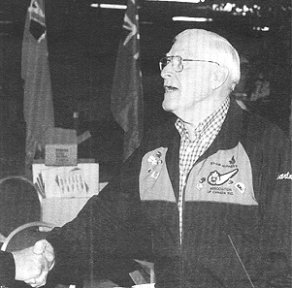
Well done good and faithful servant.
What can one say about the man who started it all.
A collective handshake from All the Members of our Ex-Ags
Association.
Thanks, Charley.
BOOKS
THE BAND OF BROTHERS, a future book to watch for.
Dear John Moyles, as you did an excellent review on Reg's
first book The One Hundreth Airman, I thought I would keep you posted regarding
his next book - The Band of Brothers due out later this year. Reg now has
a web-site: www.reach-for-the-skies.co.uk
Kind regards, his niece, Janet Stead
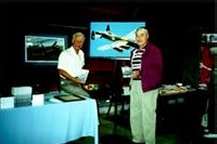
Reg & his co-author Murray Straker
at one of their book signings
THIS BAND OF BROTHERS should not be dismissed as just
one more book on World War II. In essence it is not a war story at all
but rather a moving account of the lives of four young men affected by,
and set against, the events of a war not of their choosing.
Sons of English immigrant farmers the boys grew up on
the Saskatchewan prairies of western Canada yet retained strong family
ties with relatives in the Mother Country. In 1940, with Britain on its
knees and along against the might of the Third Reich, the eldest of the
Lodington Smiths enlisted in the Canadian Air Force inspired by a moral
sense of honour and duty. His brothers followed as they became of age and
in all three joined the Air Force and the youngest the Royal Canadian Navy.
Sadly two of the boys paid the ultimate price.
In scope the story covers every theatre of the war from
that of Europe to the Middle and Far East and finally to the Pacific, and
includes an insight into the indignity of prisoner of war life and even
the horrors of death marches. The book is essentially a testament to the
indomitableness of the Human Spirit.
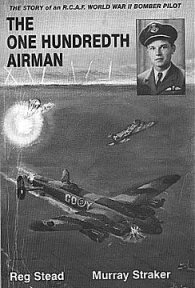 Thoroughly
researched and factually written it is a true story as gripping as any
thriller novel and not a book easily put down until its end. It is a very
good read and will be enjoyed by Veterans, history buffs, and all who delight
in a well-told tale.
Thoroughly
researched and factually written it is a true story as gripping as any
thriller novel and not a book easily put down until its end. It is a very
good read and will be enjoyed by Veterans, history buffs, and all who delight
in a well-told tale.
Authored by Canadians Reg Stead and Murray Straker this
is their second book on the theme of heroism based on World War II experiences.
For those who have read their "The One Hundredth Airman", this is another
treat equally entertaining and readable.
The One Hundredth Airman was reviewed the January 2003
Short Bursts Page. Check archives for full coverage. It is an excellent
read.
THIS BAND OF BROTHERS is expected to be released in the
Fall of 2006. Copies may be ordered through this website: www.reach-for-the-skies.co.uk
Janet
CORRESPONDENCE
John:
I read an interesting book on the life of a Manitoba
boy who wanted to fly.
It goes down memory lane as he grew up in the 20's and
30's, including the Depression, and into the war years. He survived
#6 Bomber Command and after the war returned to peace time service.
The soft cover is titled "Nickel Trip" as told by Flt/Lt.
K.C.C. Bird to his son, reporter/writer Brad Bird. Published by Pemmican
Publishers Inc. (2004).
Since it goes into great detail about places and people
it is a trip down memory lane to those who served in the same areas.
C. T. (Clare) Cove
415 Squadron, Eastmoor, Yorkshire.
Ex-Air Gunners Assoc. Wpg, MB.
ctc99mhc@shaw.net
Good afternoon John.
I forgot to mention to you that I knew Al Gauthier in
Rockcliffe sometime in 1947. I was able to send his son and daughter-in-law
a couple of photographs taken at that time. They said they were photos
that they had not seen before. If I remember correctly Al was
at Yellowknife with No.4 Detachment of 414 (Photo) Squadron. I think
he took my place one day when I was "grounded" after having a tooth extracted.
I should get in touch with them again and find out what happened to Al.
This was in response to a family request for information
on Al Gauthier; www.hillmanweb.com/rcaf/mag
Both Svend and I have some material on some of our members
that might make a good story or article for an issue. I'm going to
meet with him this week sometime.
Cheers,
Ted
Dear John
I had posted an enquiry re the blister gunner position
on the Halifax. After much digging I have talked to several veterans of
Halis who say that when the M/U turret was removed the redundant gunner
would take up a position on a mattress on the floor of the a/c and look
through a Perspex blister or Cupola and keep a watch out for night fighter
attacks from below. This was purely a look out position and no weapon was
fitted. Later on the MKIIIs of course some were fitted with Mid Under guns.
Peter W. Cunliffe, researcher UK
RECOVERY OF HALIFAX LW170
Saturday, April 22, 2006 5:55 AM
Progress Report No. 12
Dear Members and Supporters,
Please note that the new Progress Report No.12 is now
out.
Please check out our website to read this.
www.57rescuecanada.com
Do not forget to look at our website feature called Forum
which is where all Halibag fans go if they have any questions about Halifax
and Halifax history. Many interesting topics there.
Best wishes,
Karl Kjarsgaard
Project Manager
Halifax 57 Rescue (Canada)
Halifax 57 Rescue (Canada)
Dedicated to preserving the Halifax and its international
heritage and actively raising the financial support,
through corporate and public sponsorship, to find and
recover Halifax LW170.
Limited Edition Signed Prints of LW170 -
"Invincible
Item"
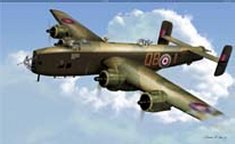
Video
See
the video of the recovery of Halifax NA337
Produced by
DunrobinCastle Entertainment
LW170 Recovery Phase I
Finding
LW170 ~ Progress
Reports
#12 Combat
History
Halifax 57 Rescue
Credentials
~ Membership
~ Forum ~ Contact
us ~ Links
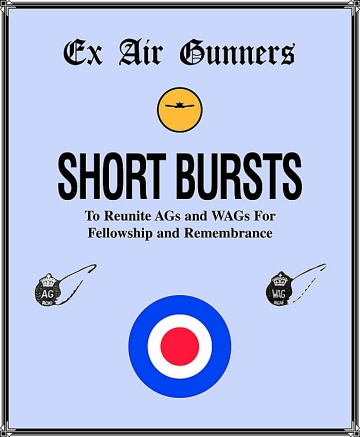

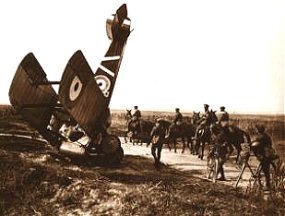
![]()
![]()
![]()
